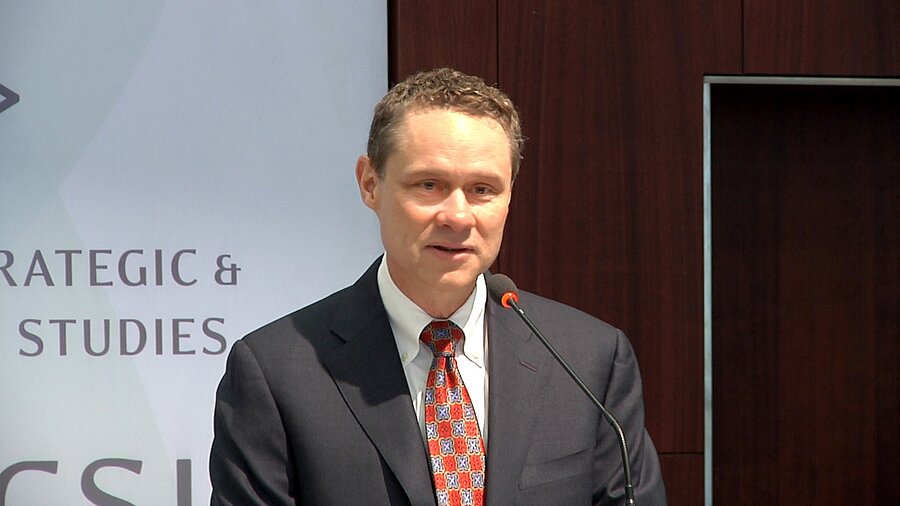Innovation at Mach 5: How defense R&D keeps America ahead
Loading...
Wes Bush is CEO of Northrop Grumman, a leading global security company. This column is an adapted version of his remarks at the Center for Strategic and International Studies Next Generation Dialogue: Rethinking Research and Development for the Department of Defense on May 26, 2015.
There is an old test-pilot’s axiom that says, "You’ve never been lost until you’ve been lost at Mach 5." The pace of technology is moving at Mach 5 -- and we better make sure we don’t get lost.
What do I mean?
Ours is an innovation-based world, an innovation-based economy, and our national security rests on a foundation of innovation.
Consider the challenges facing us today, from fiscal austerity amid a sluggish recovery to myriad foreign policy threats from terrorism, Russia, China, North Korea, and Iran. For those of us in the cybersecurity community, we get an up-close-and-personal view of the continued attacks on our nation.
Innovation, and by association, research and development, is a core enabler for solutions to all of these challenges and new challenges we can’t yet anticipate. As the President’s National Security Strategy states: innovation "empowers American leadership with a competitive edge that secures our military advantage."
Innovation, to put it simply, keeps you moving (and in the right direction) at Mach 5.
But innovation doesn’t simply happen. We know that our efforts at R&D must be carefully managed and cultivated.
And part of that careful management and cultivation is recognizing that, when it comes to national security, not all R&D is created equal.
How is that so?
In today’s framework of very tight budgets -- including that ugly word, sequester -- and austerity, there is a very understandable desire to find cheaper alternatives to defense R&D.
Because the commercial world is just as innovation-dependent as the defense world, it is natural that appropriators and the acquisition community would look there for innovations to somehow transform into what we’re doing in defense.
But I submit that commercial solutions, in and of themselves, are NOT the answer to our national security need for technological superiority and therefore should not be used as an excuse for further reductions in R&D. Commercial R&D represents leverage, not a dependable substitute, for defense R&D.
Consider the following: Commercial technology, being inherently broadly available, offers no national security advantages by definition -- thus, many national security needs simply cannot be met with commercial technology, nor will many commercial businesses develop technologies of interest to the defense community. (The automobile industry has no interest in stealth, last I checked.)
Nor does the commercial world have any interest in developing technologies for advanced hypersonics, electronic jamming, offensive cyber, or advanced missiles, to name a few areas of need.
There are just too many differences between the commercial world and the national security community for their R&D efforts to be interchangeable. (In fact, the defense community can certainly learn a thing or two from the commercial world about such negatives as risk aversion and drawn-out acquisition and development timelines.)
Perhaps the biggest difference between these two worlds comes down to basic business models.
Commercial technology follows the money wherever it leads. If the numbers say that a technology is no longer profitable, it’s simply discontinued. Most of us have experienced this -- when we go online or make a phone call for something purchased a while ago we discover that our model is, sorry, "no longer supported."
This is understandable given the fundamentals of the commercial business model.
But the defense industry business model requires it to stand by the customer regardless of the intrinsic value of the technology. The youngest of the B-52s is a half century old. Guess what: we still support it.
Harkening back to the B-52 reminds us of another historical lesson. Think of the imperative of the founding of Defense Advanced Research Projects Agency (DARPA) with Sputnik: it was perfectly OK for several attempted rocket launches to absolutely fail because we, as a nation, felt the need to move fast and because we felt a real threat and a real risk. For those really involved in the cyber community, we feel that degree of risk today.
Because of that, we are moving really, really fast in developing cybersecurity solutions. We are taking a lot of risk -- but it’s acceptable risk. It’s risk we need to be taking to address the threats to the nation. And when I look at the pace of development and pace of change that we’re seeing in the cyber community, it’s reminiscent of the early stages of the space industry, aerospace and aircraft.
It is a reflection of a very different perspective on risk and managing risk and the imperative for speed.
And blending that need for speed with the needs of America’s national security? No other community can do it better.
Follow Northrop Grumman on Twitter @NorthropGrumman.







